#sandrp
Explore tagged Tumblr posts
Text
Riverbed Mining Destroying Indian River Eco-system and Freshwater Species
from thefreeonline on 21st January 2023 by SANDRP South Asia Network on Dams, Rivers and People about Sandrp 2022: Riverbed Mining Destroying Indian River Eco-system & Freshwater Species: Sand Mining January 20, 2023 SANDRP (Feature image sources: Clock wise (1) Mahseer fish/ Mongabay India, April 2022. (2) Gharials in Chambal/India Today, July 2022. (3) Gangetic dolphin/ECO NE. (4)…
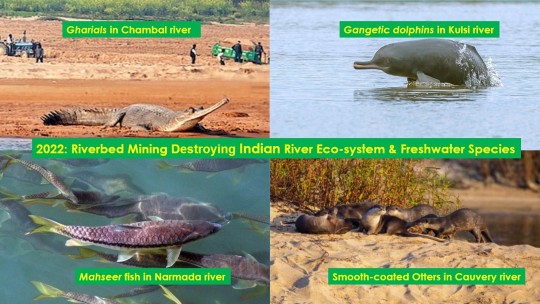
View On WordPress
0 notes
Text
Sand Man

DWN - 189
Good Point: Very loyal to those that can gain his respect, Intelligent
Bad Point: Sociopath
Personality: Calm, Cruel, Calculating, Hard Working
Likes: When a plan comes together, Inducing fear, Being able to assert his authority over others, Candy
Bio: Originally Sand Man was created to gather information on patients during sleep studies for the medical and psychiatric field. During this time a lack of social interaction granted to him and an unnoticed error in his personality coding caused his AI to develop improperly leaving him emotionally distant.
This problem continued to go unnoticed and the instructions to allow him proper social interaction went ignored as he was always seen tirelessly working at each task he was given. For all intents and purposes he was perfect for the job he had been assigned. Problems did not start to arise until he was given orders to work with patients suffering from night terrors and nightmare disorder. He instantly grew fascinated with the fearful emotions that would show through even deep sleep where every other human he had worked with before would sleep peaceful with little to no expression. His first experience with an extreme human emotion quickly turned it into his favorite.
It didn’t take long for him to start growing attached to watching the patients with the most advanced cases of these disorders to the point of hating when they had to leave. His obsession with seeing these fearful personalities led him to pursue discharged patients. Using his medical knowledge from his job he would use various drugs to put them into medically induced comas. He was delighted during this time to find that those emotions of fear shown brightest as he was chasing them down.
It didn’t take long for him to him to be found out and to be scheduled for immediate deactivation. Before his AI was destroyed and body scrapped he was stolen by Wily and reprogrammed for combat purposes.
Job: Sand specializes in psychological warfare. Using his sleep wave, he both blinds and digs up the worse fears of his opponents making them easy targets. He is also an excellent liar and smooth talker which he uses along with his nonthreatening appearance to try and befriend his enemies long before they realize his true colors.
Weapon 1: Sleep Wave
Sand generates a signal in a 20 foot radius around himself. The immediate effect of this signal is a loss of vision to any robots caught in this area, the secondary effect is it starts a forced standby (aka Sleep) in the blinded robots. If a robot can not get out of this radius within 30 seconds they go into standby (Sleep). The blinding effect of the weapon wears off immediately if the robot can step out of the range and the 30 second countdown resets.
If Sand can manage to force a robot into sleep mode he can cause them to experience their worst fears and nightmares by accessing memory files.
Sleep wave also emits an infrasound that induces fear and dread in humans and animals close enough to hear it.
Due to how hard it is to keep a robot holding still long enough to put an enemy into sleep mode with the short range of his attack, Sand prefers to try befriend enemies first and trick them into a situation that gives him the upper hand to use it. If he can not he uses the blinding effect to at least confuse and disorient a target. Or he will try to find robots that have already gone into sleep mode.
Weapon 2: Crescent Shot
Right arm buster that fires a crescent moon shaped shot. Damage output is mediocre and applies cutting type damage.
Other:
Sand can sometimes be found with La Lune a large robotic moon robot that he uses for transportation and battle. More info on La Lune can be found here.
Due to his body being small Sand can easily be overpowered by a few well placed shots if the opponent can hit him.
Weakness: Light based weapons such as flash stopper due to his eyes being designed for work in dimly lit or perfectly dark areas.
1 note
·
View note
Text
India’s Gruesome Tales of Illegal Sand Mining undermine Environment Conservation Initiatives

Photo Credit : Nandakumar Pawar
By Vineet Malik | February 06, 2021 | London, England
193 Died in River Sand Mining Incidents in India in 2019-20
The environment has been paying a substantial price over quenching the greed of human beings for amassing wealth at the cost of widespread devastation and endangering our evolution.
A recent research published by “International Journal of Science” underscored the adverse effects of sand mining on the environment in India.
Illegal sand mining has resulted in changing the flow and degradation of rivers and coastal ecosystem, soil erosion, deepening of rivers and estuaries, undermining bridges, increasing the risk of flooding, eliminating buffers against storm surges, disturbance of the water table leading to topographic disorder and severe ecological imbalance.
Sand mining in India is regulated through various national and province laws where-in, it should be legitimately carried out only after obtaining approvals from statutory bodies along with mandatory safety measures. Unfortunately, that seldom happens according to the rule book.
Involvement of sand mafias in bludgeoning people to death is often debated by scores of people in society however such instances are only surging with time that has further led to a feeling of anguish and pain among the loved ones of those who lost their lives for protesting against illegal sand mining. The illegal sand mining activities involve the local mafia who often use arms and weapons to run the racket.
According to a report in NewsClick, journalist Shubham Mani Tripathi employed with a local newspaper : Kampu Mail was shot dead by unidentified persons on June 19 last year for reporting on illegal sand mafia activities in Uttar Pradesh province.
Sumaira Abdulali, founder of Awaaz Foundation - an environmental NGO in Mumbai says, “As sand is one of the indispensable ingredient for driving the economy through construction growth agenda, therefore political will to cease illegal sand mining is lacking.”
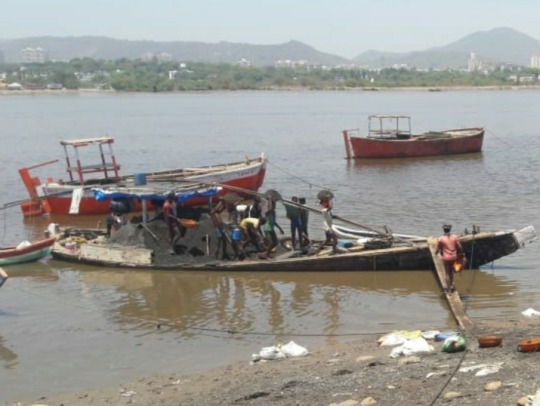
Photo Credit : Nandakumar Pawar
Recently, a virtual dialogue titled “Blood on the Sand” focused on dangers of riverbed mining in South Asia was organised by Third Pole where-in the role in governance of sand mining and the failure of the Government was discussed at length by the participants.
Justice Madan Lokur, a former Judge of the Supreme Court of India recently expressed concern over deteriorating law and order situation and said “The core issue of implementation of sand mining laws gets concealed on a wrong premise of policy decisions.”
In late 2020, South Asia Network on Dams, Rivers and People (SANDRP) released a shocking report titled “193 dead in River Sand Mining incidents in India in 2019-20”. The said report underscored illegal sand mining activities adversely impacting river ecosystem and riparian communities.
The report also highlighted detailed province wise data of people directly or indirectly alleged to have been killed due to illegal sand mining activities, involvement of politicos and cited deterioration of the ground situation.
Despite several protests by locals and number of court orders reprimanding the central and province governments, people from all sections of society are targeted for speaking against unlawful sand mining activities.
A Public Interest Litigation (PIL) with a title M Alagarsamy Vs Union of India filed in the Supreme Court of India in 2018 with a plea to cease all river and beach sand mining activities by Advocate Pranav Sachdeva still remains undecided.
Advocate Sachdeva says “The only way to stop the current loot, is by scrapping all existing sand mining leases/licenses across the Country and thereafter work in conformity with the lawful procedures.”
#The Supreme Court of India#sandrp#sumaira abdulali#greta thunberg#unenvironment#ministry of environment#united nations#united nations environment#nandakumar pawar
0 notes
Text
Let's solve this debate once and for all: It's HO (with the letter "O") in the US, and H0 (with the digit zero) in continental europe. Simple as that.
In case you're wondering what I'm on about, it's about the name for the most common model railroad scale. In the early years of the twentieth century, the model railroad gauges where numbered 1, 2 and 3. Then someone invented something smaller and called it 0, or O. Then someone invented something that is half the size and called it H0, or HO, as in Half-Null or Half-O. (There's also something called OO that isn't relevant to this discussion)
In Germany, it is generally agreed that this scale is spelled H0, with the digit. Pronouncing it as "Ha-Oh", as in the letter, will immediately reveal you as a beginner; anyone who has experience (and that is most of them because most model railroaders are old) pronounces it "Ha-Null". Now, Germany is the biggest market for continental european model railroads (the UK does its own weird thing that isn't relevant here), and most model train manufacturers have their headquarters here. The individual countries aren't that separated, after all: A french freight car, for example, can plausibly be found in most european countries (except for the iberian peninsula, any country that used to be part of the russian empire, and any country that used to be part of the british empire, although there are exceptions for all of these). And in modern times, trains that regularly cross borders have become the norm. So it's really one model railroad market, and because the germans are the most boring people in it, they're the ones who do the most model railroading, and that in turn means german standards are what most countries use (because they want to sell their models to picky germans).
The US, on the other hand, is a completely different model railroad market. Trains really don't cross over (with some incredibly rare exceptions), and neither do model railroad manufacturers. The few that do (Bachmann and Kato) have essentially completely different divisions for the US and the European market. The US market is very clear on the spelling: For them it is HO, always, no exception. That is also the spelling used on the websites of all model railroad manufacturers.
So obviously Wikipedia is full of edit wars between people who logically try to prove that it's H0 for historic reasons, and people who try to prove that in practice it's always HO. Personally, I'm not ever going to say "Ha-Oh", that's just stupid. But you can definitely understand why americans are nonplussed when europeans come and say "actually it's not spelled the way it's always spelled".
But there doesn't have to be an edit war here. The key to resolving this is to understand that these are actually two separate things. This seems weird because american HO and european H0 trains will run just fine on the same tracks. But on paper, those are different standards that just happen to be largely compatible.
For the US, those standards are set by the National Model Railroad Association NMRA. It's standard S-1.2 defines HO scale as one where one foot in the original becomes 3.5 millimeters in the model, which works out to a ratio of 1:87.1. This is certifiably insane, but at least it's a standard.
The continental european standards are set by european model railroad association MOROP and are called NEM, which translates to either "Normes Européennes de Modélisme ferroviaires" (french), "Norms of the european model railroads" (english) or "Normen europäischer Modelleisenbahnen" (german). Note that as of right now, they're not actually available in english; the website says that english versions will be published starting in December 2019 (it is now October 2020). Anyway, standard NEM 010 specifies that H0 scale has a ratio of exactly 1:87.
There are more differences. For example, the US tends to use different couplers than Europe. Europe in turn has a lot of standards about complicated mechanics to reduce the gap between the buffers at the end of coupled train cars, something essentially unheard of in the US because their train cars don't have buffers. And don't get me started on the standards for narrow-gauge railroads, which don't have anything at all to do with each other.
That is not to say that both standards and standard bodies are fully distinct. NMRA standards for digital command control are used by both sides, and even european trains will often have the much finer-looking wheels according to NMRA recommended practice RP25 (those wheels look great but they're a pain to put on the rails). In turn, american manufacturers seem to be slowly following the NEM standards for DCC plugs.
But still, it's easiest to think of HO and H0 as two different but closely related standards used in different parts of the world that are spelled differently. Or even easier yet: Ignore those giant expensive things and use N scale. That's what I do.
(As for other railroad markets: There don't seem to be any standard bodies for the UK and Japan, the other two big model railway markets, but neither of them actually use H0/HO that much anyway. The british use OO gauge, which is closely related, runs on the same tracks, but actually a slightly different scale, so they could build models of their smaller trains with the same-sized electric motors as their continental counterparts. This one is always spelled with OO. Meanwhile japanese homes just don't have enough space for H0/HO train sets, so they all use N scale, and the issue simply does not arise.)
2 notes
·
View notes
Text
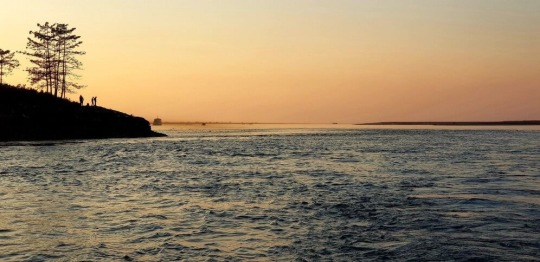
China Approves ‘Super Dam’ Project on Lower Reaches of Yarlung Tsangpo, Close to Indian Border
— By Dhairya Maheshwari | Sputnik | March 8, 2021
Originating in China's Tibet Autonomous Region, the Yarlung Tsangpo is the ninth-longest river in the world and passes through some of the most difficult geographical terrain on Earth. Commonly known as the Brahmaputra in India, the river has been a source of friction between China and India because of dam construction activity.
Beijing's new Five-Year Plan (2021-25), presented before the ongoing National People's Congress, has given the nod for the first dam on the lower reaches of the Yarlung Tsangpo River. It will be the first instance of hydroelectric power dam construction activity on the stretch of the river that lies close to the Indian border in the Tibet Autonomous Region (TAR).
The Indian daily The Hindu reported that the draft of the 14th Five-Year Plan clearly states the construction of the project as being among the long-range objectives of the Chinese Communist Party (CCP). According to the daily, the Five-Year Plan will be approved at the conclusion of the National People's Congress on Thursday.
The 4,696-km-long river (commonly known in India as the Brahmaputra River) enters India from China in the state of Arunachal Pradesh, then goes through Assam before it enters Bangladesh and joins the Ganges. The joint rivers ultimately end their course by emptying into the Bay of Bengal.
While Beijing has built dams on the upper and middle stretches of the river, reports about a proposed "Super Dam" on the lower reaches of the river first appeared in Chinese state media in December of last year.
According to a Global Times report in December, the "massive" 60 GW (gigawatt) capacity dam on the lower stream of the Yarlung Tsangpo, described as having "no parallel" in history by Yan Zhiyong, the chair of the Power Construction Corp of China, will help Beijin in meeting its Paris Climate Accord goals of achieving zero carbon emissions by 2030.
The report about the "super dam" raised alarm bells in India, with the federal Water Resources Ministry telling Reuters in December that New Delhi was mulling another 10 GW dam to offset the impact of the Chinese Super Dam upstream.
Chinese Dam to Have 'Significant Impact' on Flow Pattern in India
The proposed Chinese dam on the lowest stream of the Yarlung Tsangpo River will have little impact on the amount of water flowing into India. But it will have significant bearing on the flow pattern of the river, environmentalist Himanshu Thakkar, the coordinator of New Delhi-based South Asia Network on Dams, Rivers, and People (SANDRP), told Sputnik.
He said the Chinese dam was proposed on the lowest of the three streams of Yarlung Tsangpo, which accounts for only 20-25 percent of the overall volume of water getting into India.
"Since the river is known for carrying one of the highest volumes of water among all the rivers, there would be hardly any impact on lower riparian states such as India and Bangladesh on the front", explained Thakkar.
He, however, added with caution that the "change in flow pattern" could have major bearing for India, China's immediate neighbour.
"The project will have little to no impact on Bangladesh on any parameter", said Thakkar.
He explained that the flow pattern refers to the rate of water flow, which "could vary unpredictably" once the Chinese dam comes up upstream.
Thakkar further cautioned that the "amount of silt" flowing in the river once it enters Indian territory could be significantly reduced by the upcoming Chinese dam. "Silt is known for its benefits to farmers. On the Indian side, many (people) around the river depend upon the fertile lands around the river for their livelihoods".
On the back of New Delhi's concerns about the new dam, Chinese Embassy spokesperson Ji Rong said that Beijing would "take the interests" of other riparian states into consideration before planning any hydro projects on the Himalayan river.
0 notes
Text
Sardar Sarovar Dam's sudden water release flooded parts of Gujarat, suggests an...
Sardar Sarovar Dam’s sudden water release flooded parts of Gujarat, suggests an…
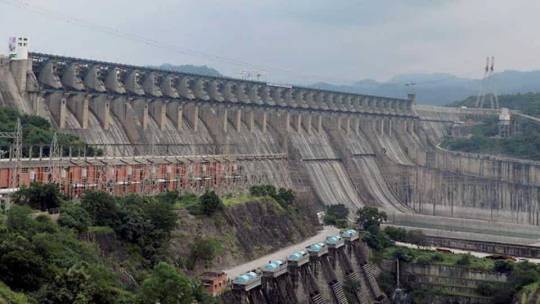
An analysis by the South Asia Network of Rivers, Dams and People (SANDRP) has suggested that severe flooding in Gujarat’s Bharuch, Narmada and Vadodara districts from August 29 to September 2 had occurred because of sudden release of massive quantities of water from the Sardar Sarovar Dam (SSD).
This has led critics and supporters of the dam writing counter arguments on online portals on the role…
View On WordPress
0 notes
Text
हर डैम और तटबंध है डिजास्टर का सोर्स, विशेषज्ञ ने बताई विकराल होती जा रही बाढ़ की वजह
हर डैम और तटबंध है डिजास्टर का सोर्स, विशेषज्ञ ने बताई विकराल होती जा रही बाढ़ की वजह

[ad_1]
नई दिल्ली.साउथ एशिया नेटवर्क ऑन डैम्स रीवर्स एंड पीपल (SANDRP) के कोर्डिनेटर हिमांशु ठक्कर ने कहा कि तटबंध (Embankment) और डैम (Dam) के मिस मैनेजमेंट से साल दर साल बाढ़ (Flood) की विनाशलीला बढ़ ��ही है. इसलिए तटबंध बनाने वालों और बांध से पानी छोड़े जाने पर होने वाले नुकसान को लेकर इसके ऑपरेटर की…
View On WordPress
#dam disaster#Dam failure#dam management#disaster management#embankment destroyed in bihar#floods in assam#floods in bihar#nitish kumar#river#असम में बाढ़#आपदा प्रबंधन#तटबंध से बाढ़#नदी#नीतीश कुमार#बांध की विफलता#बांध प्रबंधन#बांध से आपदा#बिहार में टूटा तटबंध#हिमांशु ठक्कर
0 notes
Text
‘Draft EIA notification fosters non-transparency, encourages environmental violations’
‘Draft EIA notification fosters non-transparency, encourages environmental violations’
[ad_1]
The draft environmental impact assessment (EIA) notification issued by the Ministry of Environment Forests and Climate Change (MoEFCC) in March dilutes the EIA process and encourages environment violations in case of big irrigation projects, alleged the South Asia Network on Dams, Rivers and People (SANDRP).
The SANDRP is a network of researchers and experts working on water and…
View On WordPress
#environment violations#Environmental impact assessment#irrigation projects#Ministry of Environment Forests and Climate Change#notification#Rivers and People#South Asia Network on Dams
0 notes
Text
DRP NB 031022: Great Victory of People: MP govt scraps all contracts related to Maheshwar Dam — SANDRP
DRP NB 031022: Great Victory of People: MP govt scraps all contracts related to Maheshwar Dam — SANDRP
While congratulating the state government for cancelling the contracts, we would also suggest that the government needs to quickly decide about decommissioning of the dam, so that it does not pose safety risk to the people upstream and downstream and also perpetuates unnecessary adverse social and environment impacts. Earlier the dam is decommissioned, quicker will be the relief from these…

View On WordPress
0 notes
Text
Wetlands management in India
This article is submitted by Anshika Agarwal, pursuing B.A.LLB from VIPS, IP. The article aims to discuss the policies and methods adopted by the Government to counter the effect of human activities and cater the management of wetlands in an effective way. The article scrutinizes the methods adopted, providing suggestions to carry out the process of wetland management in an effective manner.
Introduction
Wetlands directly or indirectly can be credited with the regulation of the ecosystem of a place. From serving as a home to a varied species of flora and fauna to modulating the hydrological cycles by maintaining the groundwater levels, they play a pertinent role. However, phenomena like population upsurge, pollution dwelling and inappropriate waste dumping activities have constantly resulted in the depletion of these natural possessions.
The studies conducted by South Asia Network on Dams and Rivers (SANDRP), reveals the present day concerns of Ramsar wetlands sites in all the four zones of India. For instance, Kolleru Lake in the South that measured 308 sq. km. in November 1999 was reported as an area existing only on paper by the reports of November 2019. Punjab that was home to 6 Ramsar sites reportedly lost 35 percent of its wetlands owing to human-induced activities. Thus, the data collected immediately diverts our concerns towards the management and conservation of the wetland sites.
Wetlands management
The anthropogenic activities have always posed a consistent threat on the biodiversity of these areas. This calls for a comprehensive set of policies and regulations to preserve and manage the sustainability of these areas. Hence, there has been a constant response aiming at the management of these areas with the ultimate aim of combating global warming and climate change, on the part of the government.
Objectives to realise by the management of the wetlands
The news excerpts continue to shock the human conscience with incidents of endangered and threatened wildlife species. The studies conducted by the International Union for Conservation of Nature 2018, reveals that 17 bird species have been labelled as critically endangered and 20 as endangered. This can be credited to the disturbances created in the ecological cycle by human activities.
Thus, a proper plan, policies and regulations are awaited suggesting the short term, long term methods, techniques to prevent the endangerment of a plethora of species of flora and fauna. This can be done only by protecting their habitat in urban and rural areas by managing wetlands and coastal areas that offer a home to such species.
Another objective to realise is the reduction in the levels of greenhouse emissions due to increasing anthropogenic activities. A well-formulated plan managing the wetland sites would aim at monitoring these activities in a way that the environment is the least to get affected.
Click Above
Policies and Methods to promote wetlands management
Ramsar Convention
The Convention also termed as “The Convention on Wetlands of International Importance”, contracted in Ramsar, Iran, in 1971, outlines the basic international framework to be followed by the signatories for better international cooperation to achieve mutual ends in maintaining the sustainability of the wetlands. The nations bounded by the Convention have an onus to promote a sage use of transboundary wetlands with respect to the territorial waters.
The Convention provides for the maintenance of a record named “Montreux Record” of the wetland sites that have experienced or are on the verge of experiencing ecological disturbances due to human-induced activities. The contracting parties have the authority to add or remove the sites from the record.
World Wetlands Day: The day is celebrated on the 2nd of February every year to mark the signing of the Ramsar Convention in Iran. The day aims to create awareness on climate changes, global warming, upsurging pollution levels as the contributing agents in the deterioration of the wetlands.
National Wetland Conservation Plan
The Central Government in close coordination with the States and UTs proposed NWCP during the years 1985 – 1986 with the sole aim of preventing further degradation of the wetland sites. The Centre was made responsible for providing the States and UTs with financial help, technical whereabouts, extensive guidelines monitoring the management of these areas, for proper implementation.
Process laid by the Guidelines
The plan put forwards the guidelines for the process of identification and funds raising schemes to be complied with by the States and the UTs.
IDENTIFICATION
The plan mandates the States/ UTs to submit a proposal for the identification along with the supplying of relevant information including the topography, legality, and threats associated with that area. The criteria for conferring the wetlands with the status of national importance is the same as that of Ramsar Convention.
FUNDING
The process of funding involves execution of the Management Action Plan and the Research Projects.
Management Action Plan:
The management of the wetlands is the primary duty of the States and UTs having jurisdiction over them. There lies an onus on these States/ UTs to submit a comprehensive plan for a period of 3 to 5 years, outlining the ordeals, short term strategies and objectives regarding the management of these areas. The Central Government then, based on the availability of funds and compliance to the rules and procedure set, approves the plans followed by the release of funds for its execution.
Research Projects:
The Central Government provides sponsorships for the research projects undertaken by the universities and academicians to promote the concept of techniques to preserve the wetlands. The outcomes of these researches are shared with the States for an effective implementation of the management plan. The Research Advisory Committee approves and monitors the commission of such projects in the States and UTs.
National Environment Policy, (NEP) 2006
The policy framework was brought in to build on the existing environmental policies and mend the glitches in them by providing a comprehensive set of solutions. The policies were introduced to consolidate India’s response to positive environmental contribution.
The NEP suggests methods for the sustainable maintenance of the wetlands that includes:
Setting up of a legal mechanism for the identification and prevention of the wetlands.
Involve the participation of public agencies and multi-stakeholders to implement the new conservation schemes and projects.
Promotion of traditional techniques so that the heavy economic expenses involved in the huge infrastructure projects can be waived off.
Wetland (Conservation and Management) Rules, 2017
The Central Government came up with legally enforceable rules with regards to the management of wetlands for the first time in 2010. These rules were further updated and superseded by the draft order of 2016 which was eventually notified by the Ministry in 2017.
The Wetland (Conservation and Management) Rules defines wetlands as “area of marsh, fen, peatland or water; whether natural or artificial, permanent or temporary, with water that is static or flowing, fresh, brackish or salt, including areas of marine water the depth of which at low tide does not exceed six meters, but does not include river channels, paddy fields, human-made water bodies/tanks specifically constructed for drinking water purposes and structures specifically constructed for aquaculture, salt production, recreation and irrigation purposes”.
They decentralised the process of wetland management by widening the ambit of powers entrusted to States. The powers were not just restricted to the identification of fragile wetlands sites but also included ensuring their “wise use” by monitoring the prohibited activities. The Centre was conferred with the authority to monitor the implementation of the rules by the States/ UTs, regulate the management of transboundary wetlands and ensure correspondence with the Ramsar agreement.
The Strategy as proposed by the rules
Setting up of a State Wetland Authority:
The Rules mandate creation of an authority in the State regulating the management of the wetlands falling under its jurisdiction. The authority comprises government officials and experts associated with the fields of ecology, hydrology and biodiversity and is commanded by the Environment Minister of the State. The body ensures the compliance of the principle of “wise use” by recommending the strategies, investing in research projects and implementing the outcomes laid.
Prohibition of detrimental activities:
The State authority monitors anthropogenic activities including improper dumping of waste, expansions of firms and industries, effluents and emissions discharged into the water bodies that pose a threat to the existence of the wetland sites. The activities are to be practiced keeping in mind the principle of “wise use” as propounded by the rules.
Creation of Digital Inventory:
The Rules call for the State authorities to prepare a list of wetland sites falling within its jurisdiction which are to be notified to the Central Government within a period of 6 months. The Centre, then creates a digital inventory of all such sites, based on the list submitted by the authorities.
Setting up of a National Level Committee:
The Rules further provide for the creation of a nationalised Wetlands Committee headed by the Secretary to the Ministry of Environment, Forest and Climate Change to monitor the functioning of the state authorities. The committee is entrusted with the authority to advise the Centre with the schemes, methods and ideas to promote wise use of wetlands and assist the Government in the designation of wetlands as of international importance as under the Ramsar Convention.
Suggestions
The rise in the interaction of human affairs has undoubtedly resulted in some of the shocking statistics depicting the loss in the land areas of wetland areas. The policies and the rules incorporated by the Government should be effective enough to ensure the human activities are in a balance with the ecological cycle.
However, the rules of 2017 brought up by the Government seems to cast an adverse effect on the environment. The decentralisation of the power to States by absolving the National Wetland Authority created under the rules of 2010 and creating State based authority confers states with all the regulating powers. The onus is now shifted from the Centre to the States to monitor the human interference with the environment which could turn out to be detrimental in many aspects. There can be illegal usages of land by the industry owners and stakeholders since only the State and not the Centre would be monitoring these activities.
The new definition of the wetlands as provided under the Rules of 2017 fails to include all the man-made and artificial water bodies and tanks built specifically for the purposes catering human needs as the wetlands which were earlier covered in the Rules of 2010. States like Tamil Nadu, where the majority of the water consumption is based on artificial tanks and water bodies, the rules fail to protect the environment completely.
Section 4 of the 2017 Rules provides a list of prohibited activities that are detrimental to the environment. The proviso to the Section states that an activity can be excluded from the list on the recommendation of the state authorities. This shrinks the scope of protection of the areas making the rules ineffective to a greater extent. Thus, a strong framework of rules ensuring an effective compliance with the principle of “wise use” is needed to properly manage these wetland sites.
Conclusion
With the evolution in technology, the society has adopted methods that have been a constant source of threat to the environment. The depletion of areas of Kolleru Lake in the south and Spiti Valley in the north are the statistics that have raised concerns and attracted the formulation of policies and methods countering them.
The management of these areas become important to maintain the ecological and hydrological balance in the environment. The fact that wetlands contribute in regulating water cycles, maintaining the groundwater levels and thereby facilitating the processes like irrigation, makes the conservation of these resources even more prominent.
As a result, policies and regulations have been brought into force by the Government from time to time to respond to these environmental changes. It was in 2010, a comprehensive legally enforceable set of rules was brought by the Centre for the management of wetlands. The rules prohibited and illegalised activities detrimental to the environment and contributed towards the management of these sites. The rules were replaced by the draft of 2016 wherein decentralisation of powers was made, conferring the States with the regulatory powers, that were earlier with the Centre.
Thus, the Government by the way of a newly formulated comprehensive set of policies and the Ramsar Convention aims to implement such projects and techniques that could help in the restoration of these sites.
References
https://sandrp.in/2020/03/03/ramsar-wetlands-in-crisis-south-india/
https://sandrp.in/2020/02/29/ramsar-wetlands-in-crisis-north-india/
http://moef.gov.in/national-wetland-conservation-programme-nwcp/
http://moef.gov.in/national-wetland-conservation-programme-nwcp/
http://www.saconenvis.nic.in/publication/Guidelines%20_revised_NWCP.pdf
http://www.indiaenvironmentportal.org.in/files/nep2006e.pdf
http://www.indiaenvironmentportal.org.in/content/447822/wetlands-conservation-and-management-rules-2017/
http://www.indiaenvironmentportal.org.in/files/file/Wetlands%20(Conservation%20and%20Management)%20Rules,%202017.pdf
LawSikho has created a telegram group for exchanging legal knowledge, referrals and various opportunities. You can click on this link and join:
https://t.me/joinchat/J_0YrBa4IBSHdpuTfQO_sA
Follow us on Instagram and subscribe to our YouTube channel for more amazing legal content.
The post Wetlands management in India appeared first on iPleaders.
Wetlands management in India published first on https://namechangers.tumblr.com/
0 notes
Link
Nearly 50 people have died in the floods in Western Maharashtra and over five lakh have been displaced in the past few days. What caused this devastation is now a matter of study. A report by the South Asia Network for Dams, Rivers and People (SANDRP) says the widespread damage could have controlled and the government could have done more. from Videos https://ift.tt/2TEwG3t
0 notes
Text
Illegal Sand Mining 2017: Indian Rivers Continue To Loose Mindless Mining Battle
#Illegal #Sand #Mining #2017: #Indian #Rivers Continue To Loose Mindless #Mining Battle
Bhim Singh Rawat This article extensively captures the incidences and media stories on illegal sand mining from rivers in India during the year 2017. This article originally appeared at SANDRP and can be accessed here. It has been republished with permission.
Undoubtedly sand is essential part of river ecosystem. Like flow and fish it helps rivers stay healthy. It’s critical for ground water…
View On WordPress
0 notes
Note
"Excuse me, sorry…I wasn’t looking where I was running. (man am I original)
The moment Sand felt someone bumping into him he growled, attempting to keep his composure and holding back his anger. How dare this idiot run into a Wily bot.
“Its ... “ he started as he turned and realized he was face to face with a very recognizable lightbot.
“It’s not a problem at all ...”
13 notes
·
View notes
Text
11 of last Gangetic Dolphins Found Dead since Jan 2021
11 of last Gangetic Dolphins Found Dead since Jan 2021
from SANDRP.. April 29, 2022 South Asia Network on Dams, Rivers and People We humans are thousands of millions. But of our mammal cousins, the intelligent, sentient Gangetic dolphins, there are just a few hundred survivors left. Let’s save them! Despite being declared National Aquatic Animal and provided the highest level of protection under schedule I of Wildlife Protection Act, 1972, there…
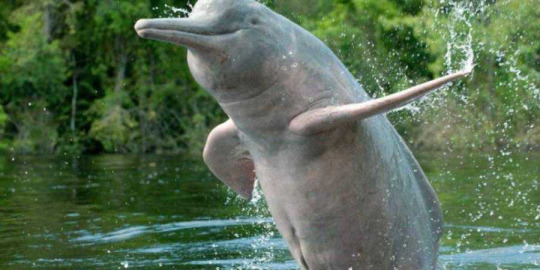
View On WordPress
0 notes
Text
Fortune’s Told
@improvedrelics
Despite the darkness Sand could see everything perfectly. Though what he saw didnt make sense. Where did that portal lead him?
And why the hell was he in a closet!?
A small growl emanated from his throat. He had too little information of where he was and what was on the other side of the door. Despite that there was no use in just sitting in the dark waiting for something to happen.
Slowly he pushed open the door and peered outside cautiously. He was obviously in someone’s home. Hopefully a human, someone he could easily take out if he needed until he found a safe place to learn more about the world that portal lead him too.
73 notes
·
View notes